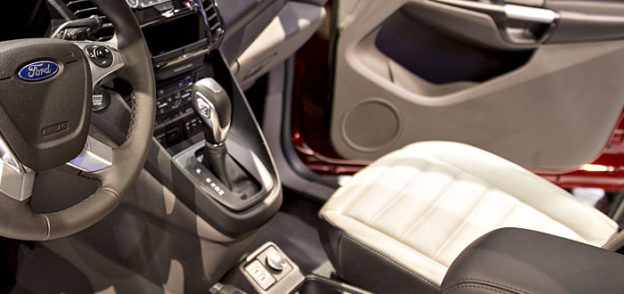What is “new car smell” and is it bad for you? As I shopped for a new car last year, I realized that my priorities were considered odd by most car salesmen. The three most important characteristics I desired in a new car were good gas mileage, good crash safety, and relatively low concentrations of “new car smells.”
The often celebrated (but particularly noxious) “new car smell” is actually a synthetic blend of respiratory irritants and potential carcinogens off-gassing from the plastic, glues, and seating materials found inside the car.
One year later I am happy I chose my car from one of the top five lowest emitting models.
Testing of car interiors has revealed the presence of volatile organic compounds, (including formaldehyde, toluene, and benzene) polybrominated diphenyl ethers (PBDEs) which are used as flame retardants, and phthalic acid esters (phthalates).
These chemicals and substance are known to exacerbate respiratory illnesses, produce nose and throat irritation, cause headaches, and even irritate the skin. Exposure may even increase the risk of cancer, endocrine system disruption, and neurological problems.
The best cars of 2013-14 in terms of low levels of hazardous chemicals, according to The Ecology Center’s testing and report, include the Honda Civic, Toyota Prius, Honda CR-Z, Nissan Cube, Acura RDX/ZDX, Audi S5, and the Smart Coupe. The full list of car rankings is worth reviewing. Not listed but supremely admirable is the Amish horse-powered buggy.
As the summer approaches, and the heat goes up, off-gassing and the release of chemicals from car interiors greatly increases. It is wise to ventilate any car that has been sitting in the heat.
Some advise driving with the windows cracked to improve air quality. While this would certainly reduce the ambient concentration of chemicals released from the car interior, I worry that driving on busy multi-lane highways with the windows wide open trades poor quality interior air for poor quality exterior air.
The “outdoor” products of combustion and car operation include fine particulates and ultrafine particulates, the inhalation of which has been directly correlated with increased cardiovascular risk.
Ultrafine particulates in particular penetrate deep into our bodies via the lungs, create inflammation, and promote heart disease. Their emission has been estimated to result in an additional 4 million deaths per year across the world, according to the EPA.
In order to achieve the best air quality, perhaps some variation of this crazy yet deliberate plan might help. Purchase a car that scores well in terms of the safety of its materials. Ventilate the car well in the morning.
Then close the windows and run the AC with recirculated/filtered air while on the 4-6 lane highway, thereby decreasing particulates and combustion products inhaled from outdoors. Park and leave the car windows cracked open all day as the car bakes in increasingly hot weather.
On the way home repeat this sequence, being careful to disengage emotionally from the many provocations of aggressive drivers, who incidentally remind us of brain-starved, half-human zombies.
Good luck with your own paranoid routine, but do consider that new car smell when you purchase your next vehicle. It definitely gives me a headache.

